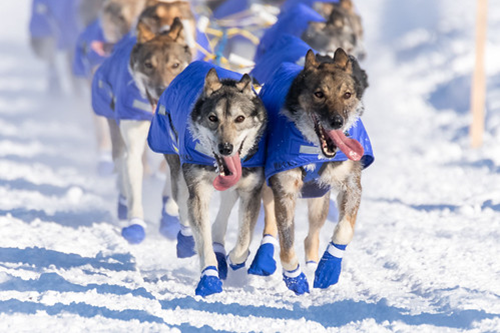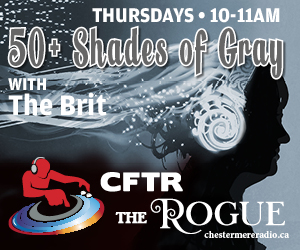I recently had coffee with a friend who I hadn’t seen for a while and we marvelled over each other’s vacation pictures from last summer. She had gone with a group of friends on a cruise to Alaska and said for her it was a trip of a lifetime. I suspect that a number of you are considering a similar trip to Alaska this coming year but I’m betting that no-one will be doing the trip on land, that goes from Willow, near Anchorage to Nome out on the Alaskan coast! This is, in the dog world, the famous Iditarod which this year starts in Willow on March 1st. The race is a distance of 1,850 kilometers and can take between 8 and 15 days. Before you consider being a participant it is necessary to qualify. The Iditarod mushers (sled drivers) must complete two approved 300-mile races and one 200-mile race and only northern bred dog breeds like Siberian huskies and Alaskan malamutes are allowed to race. The sled teams must consist of 16 dogs at the start and finish with at least six dogs. Each day the sled dogs need between 10 and 12,000 calories and they have to wear special booties to keep their feet covered and protect their foot pads. The race rules require mushers to carry and extra eight sets of booties per dog on the sled and the mushers generally make these themselves for their dogs. The Qualifying Review Board says that dog health and care are central to the success of the Iditarod. “We are committed to ensuring a culture of exemplary dog care and we demand the same commitment of all teams who enter the race.” https://iditarod.com
Traditionally, dog-sledding has been the way of life for transportation and day-to-day work, particularly in Northern villages. “Mushers and their teams played important roles in WW2 and after the war, short and medium distance freight teams were still common in many areas of Alaska but the advent of snow machines and snowmobiles resulted in the abandonment of dog teams and the loss of much of the mushing lore.” Don Bowers 2020 www. Iditarod.com
It became important for a group of people led by Joe Redington, an historian, to save the dog sled culture and to save Alaskan huskies which were being phased out of existence. The background to the Iditarod trail was not however, as a sporting event. Nearly 100 years ago in 1925, Leonhard Seppala a Norwegian-American sled dog breeder saved an entire community. He had been working in Alaska for a mining company in Nome and on most days would cover 80 to 160 kms with his sled dog team. It also meant that he worked long hours and even when the snow thawed he kept his dogs active with a cart on wheels. His first Siberian puppies were a gift from explorer Roald Amundsen, and he instantly fell in love with the breed. When in 1925 a diphtheria outbreak struck his town of Nome, it was necessary to get life-saving serum to the town. It was taken by train to Nenana and a relay of sled teams took over the next 645kms.Seppala’s own team covered the most difficult terrain covering almost 400 kms before handing the serum to the next one. The emergency delivery, known as the Great Race of Mercy was to become commemorated annually as the Iditarod Trail Sled Dog Race.
Most of the men and women taking part in this year’s race come from Alaska but there are also mushers from Wisconsin, Montana, Idaho, and even Norway, Denmark, South Africa with the furthest entrant, Christian Turner coming from Australia.
However, I will be watching out for the only Canadian, Aaron Peck from Grande Prairie, Alberta.
The Iditarod

In response to Canada's Online News Act and Meta (Facebook and Instagram) removing access to Canada's local news from their platforms, Anchor Media Inc encourages you to get your news directly from your trusted source by bookmarking this site and downloading the Rogue Radio App. Send your news tips, story ideas, pictures, and videos to info@anchormedia.ca.



